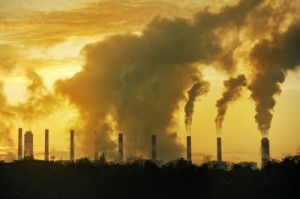The Australian Council of Trade Unions (ACTU) has expressed their views on Australia’s carbon pricing system, saying there is a need to continue support for jobs and industry during the necessary transition to a low-carbon future.

In a media release ACTU President Ged Kearney said a shift to a floating price, earlier than scheduled, would be an efficient model for carbon pricing. However Ms. Kearney is concerned that a floating price scheme would mean less investment will be placed into industries like manufacturing.
“A year in, the carbon price is working effectively and has begun driving Australia’s transition to a lower-carbon economy,” said Ms Kearney.
“Ultimately, a floating price is the most efficient form of carbon pricing.”
“However we need to make sure we keep in place the complementary policies and programs that are supporting businesses, particularly in manufacturing, to maintain and improve their competitiveness in this transition.”
The Federal Government announced over the weekend that it would axe the fixed carbon price, previously at $24.15, and move to an emissions trading scheme next year, a year ahead of schedule. The ETS scheme would mean that the carbon price would fall to about $6-10 a tonne.
The current carbon price scheme supports various organizations and programs such as the Clean Energy Finance Corporation and the Clean Technology Program. It also funds the Jobs and Competitiveness Program and the Steel Transformation Program.
A Clean Energy Map has been launched which gives the public access to information on clean energy projects. Viewers can see the amount of funding contributed to a project by the Australian Government from carbon price revenue, and contributions from businesses and communities, wherever applicable.
Clean Technology Programs support 223 projects at manufacturing businesses in Australia and the Energy Efficiency initiative provides upgrades to local government and community facilities.
“A key element of the current carbon pricing scheme is that it puts jobs front and centre, investing money collected from big polluters back into industry to develop and implement new environmentally-friendly technologies and processes,” said Ms. Kearney.
“Across these packages, billions have been earmarked for investment to make sure that as we cut carbon pollution, we support industries and jobs.”
“Reducing pollution is a vital economic reform and critical for reducing harm to the environment. Let’s make sure we continue to put jobs front and centre so all Australians can benefit.”














